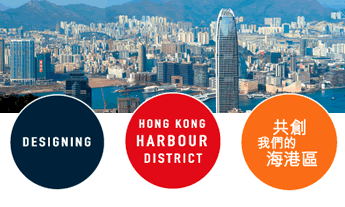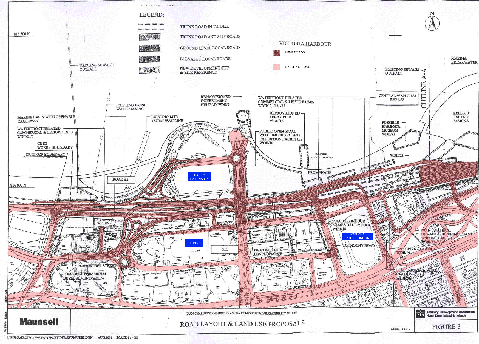





Click here to view the larger
map.
![]()
April 12, 2004
It’s
not too late to change direction
PAUL ZIMMERMAN
With the heated reclamation debate, it is easy to forget that the real
issue is how we design the harbour district, our most valuable land where
the majority of our financial, commercial, cultural, entertainment and
arts facilities are located. It has long been recognized that a vibrant
harbour foreshore is needed with public open space, parks, promenades,
arts, cultural, entertainment facilities and liberal pedestrian access.
There is a business case for this: A world-class harbour district will
lure residents and tourists to spend more time – and when they do,
they spend more money and bring more friends.
Without reclamation and available land limited, our planning decisions
today are final. Therefore an intricate trade-off is needed between new
government, exhibition, office and retail facilities combined with supporting
transport infrastructure, versus public space and facilities. For the
sustainable economic viability of the harbour district, a genuine integrated
master planning process must involve all business sectors, government
and civic groups, cover all surrounding districts, consolidate all wishes,
and include both land-use and transport policies.
By reviewing the harbour district as a whole, we can rethink where we
place facilities. Venues can be swapped, setting a new direction for Kai
Tak, reducing the pressure on Central/Wanchai, driving the renewal of
Kwun Tong and Sheung Wan, and addressing many of the problems envisaged
with the plans for West Kowloon.
The priority on Hong Kong Island is to open up the foreshore by reviewing
the planned surface road systems, the alignment of the Central-Wanchai
Bypass and reducing the planned new developments. Congestion relief is
needed, but current road designs are based on old population-growth assumptions,
a much larger reclamation, and the inclusion of a great number of new
facilities in Central and Wanchai, which are either not required or could
preferably be located elsewhere in the harbour district.
Despite the addition of a six-lane underground bypass, massive surface
roads are planned which will choke the harbour. Up to 13 lanes of surface
roads will be added to the existing 4-lane Convention Avenue in front
of the Grand Hyatt Coffee Shop. Up to 16 additional lanes of surface road
will be added to Gloucester Road. In front of Victoria Park, roads will
be stacked five-high with the top deck 21 meters above the ground. The
footbridges, walkways and ‘groundscrapers’ designed to get
over these massive roads are inadequate attempts to mitigate the visual
and physical damage.
It is understandable that our foreshore is in a bad state given the ever-changing
coastline and the fact that Hong Kong only recently changed its economic
aspirations for the harbour district. But now is the time to recognize
that planning and design mechanisms, which suited fast growth, ample rural
land and large reclamations, need to be amended to accommodate integrated
transport and land-use planning with only a limited amount of land within
Hong Kong’s most valuable district.
Government, bureaucrats and professionals themselves are exasperated with
our “system failures”. The Executive Council’s decision
to make the chief secretary responsible for West Kowloon, and the financial
secretary for Lantau confirms that the need for change is recognized at
the highest level. So why not decide the same for Hong Kong’s most
valuable economic asset, the harbour district, and establish an overriding
Harbour Authority aligning Government bureaux and departments?
To get the final design of the harbour district right, residents and businesses
must be provided with a clear business case. Where are the alternative
master plans and related transport options? What are their environmental
and quality of life implications? What are their financial implications,
including expected land sales revenue and cost of re-engineering road
infrastructure?
In the meantime, how much “extra” time can we buy ourselves
by urgently implementing traffic management policies including rerouting
bus routes, changing bus stops, limiting loading times, changing tunnel
fares and electronic road pricing?
Paul Zimmerman is executive director of MF Jebsen International, principal of The Experience Group, a policy and strategy consultancy, and chief co-ordinator of Designing Hong Kong Harbour District
